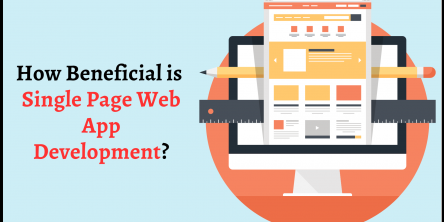How Chatbots are Revolutionizing the Media and Entertainment Industry

The fast-paced evolution of technology has empowered humanity with many novel tools, and one of the more popular tools among them, at least over the past few years, has been chatbots. Chatbots have emerged as the game changers for the media & entertainment industry and how users engage with content & entertainment. And, from personalized interactions with fans to revolutionizing customer service and content delivery, AI-powered virtual assistants are today a dynamic force for the industry.
But what exactly are chatbots? Technically speaking, chatbots are artificial intelligence (AI) driven apps meant to simulate human conversations via speech or text. Based on that definition alone, it is not difficult to imagine that chatbots have come to play a vital role in many sectors. Come to think of it; this holds especially true for the media and entertainment sector. Why? This is because they can be used for various purposes in this industry, including content discovery and recommendations, customer service, personalization, and on and on goes the list.
Join me as I attempt to delve into the fascinating realm of chatbots and their role in shaping the future of the media and entertainment industry.
Benefits of Chatbots in Media & Entertainment
Let us take a closer look at some of the benefits of chatbots in this sector:
- Cost savings: What does any company want the most? To save money, yes? Wouldn't you believe that chatbots can help with that? They help automate responses to FAQs and routine inquiries, thus reducing the need for human intervention, allowing businesses to reduce overall operational costs, allocate their support teams to more complex issues, and optimize their resources.
- Better audience engagement: Chatbots can also be used as virtual assistants, i.e., they can interact with users and address their requests, queries, and concerns with a human touch or channel them to appropriate teams, thus helping companies improve audience engagement utilizing more personalized and interactive experiences.
- Grow user base: Chatbots' ability to help grow the user base for media and entertainment products and services is yet another reason why they have become so popular in this sector. Chatbots can offer discounts and promotions, promote new content, and so much more, helping companies attract more and more new users.
Real-Life Chatbot Use Cases
Now, allow me to walk you through some of the primary use cases of chatbots in this sector.
- Surveys: Chatbots are now being used to engage users in conversational surveys, enabling the bots to gather valuable opinions, suggestions, and insights, which, in turn, are operated by media companies to understand their audience better and to help improve their offerings.
- Responsive alerts: To keep users informed and engaged, companies are yet again tapping into the immense potential of chatbots, using them to send responsive alerts to users about upcoming events, changes to their subscriptions, new content, and more.
- Subscription management: Yet another compelling use case for chatbots in this industry is subscription management. Chatbots can reduce the need for manual intervention and simplify the user experience by handling tasks such as managing their subscription preferences, assisting users in subscribing to media services, handling subscription cancellations or upgrades, providing billing information, etc.
As you can see, chatbots have emerged as indispensable assets for the industry. A specialist media and entertainment software development company can help you develop chatbots that would revolutionize their ability to provide personalized experiences, engage audiences, collect valuable data, and streamline operations. They will likely continue transforming how users interact with media and entertainment content and services. So, what are you waiting for? Get started on integrating these mighty tools in your business immediately!
Similar Articles
With the advancement of technology, goods are now being produced at an enormous rate and in diverse regions throughout the globe, which has transformed industries.
Discover how industrial printer ink differs from regular ink—durability, high-volume performance, and cost-efficiency for B2B printing needs.
Atomic Absorption Spectroscopy (AAS) is applied in fields like healthcare, food safety, and pharmaceuticals.
Modern businesses have come to rely on technological infrastructure, and quite heavily at that, no? Everyone can see the growing dependence of all industries on digital solutions to go about their operations. However, the complexity of modern business is beginning to necessitate the kind of technological solutions that can scale with changing requirements
Digital technologies and the transformation they have brought about have fundamentally altered how businesses operate. This has resulted in an increase in data generation and the adoption of various software, among other things
Users today are pickier than ever. They want their needs met with a few clicks or taps on the screen. Failure to meet their needs results in site abandonment, which is not a positive sign for a business aiming to be successful. The traditional way of information sharing through websites requires a reload for every action a user performs.
The demand for innovation is immense, isn't it? Then there is also the need to adapt to rapidly changing market demands. Phew! Businesses have so much to deal with, especially the seemingly unending challenge of maintaining IT infrastructure.
User experience (UX) is a crucial part of any digital product. A smooth and enjoyable user experience keeps customers engaged. Businesses are now investing in UX consulting services to stay ahead of the competition.
Industries that deal with nuclear energy must be cautious. They need to inspect their equipment often to prevent accidents. Traditional inspection methods can be slow and risky for workers









